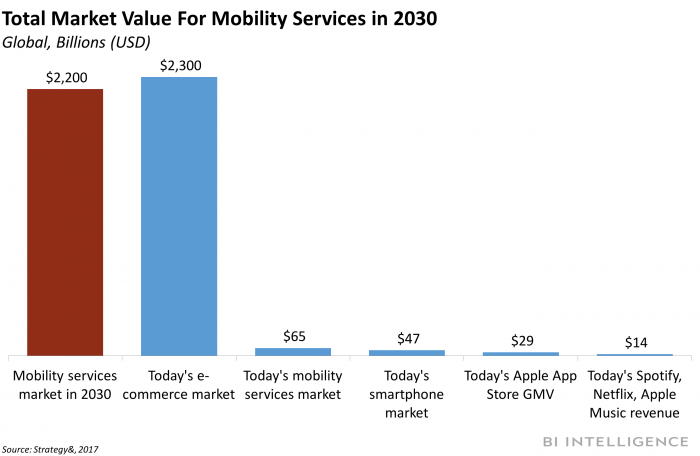Ford and GM shed new light on digital efforts

BI Intelligence
This story was delivered to BI Intelligence Transportation and Logistics Briefing subscribers. To learn more and subscribe, please click here.
Ford and General Motors (GM), the two largest US automakers by vehicle sales, revealed new details on their mobility, electric vehicle (EV), and self-driving car efforts at the Barclays Capital Global Automotive Conference in New York earlier this week.
The conference is an annual gathering where auto companies speak to Wall Street and much of the rest of the financial community.
Ford’s Smart Mobility Group, which is charged with exploring new services and business models for the automaker, has grown to between 14,000 and 15,000 employees, Marcy Klevorn, the group’s president, revealed at the conference. That’s about 7% of the company’s total workforce of 201,000 employees. The group includes the company’s EV, self-driving, and mobility efforts, and has locations in Michigan, Silicon Valley, India, and China. In addition, Klevorn estimated that about 90% of Ford vehicles on the road in 2020 will have connectivity features. She said this will give the automaker the opportunity to offer new services made possible by the vehicles’ connectivity, such as streaming media or fleet management services. This could provide Ford with valuable new revenue streams and an opportunity to grab a share of a global market that Strategy& estimates will reach $155.9 billion in 2022.
Meanwhile, GM CEO Mary Barra said the company plans to sell at least 1 million EVs annually by 2026. With that aim in mind, GM will introduce a new battery that costs the company about $45 less to manufacture and design than the previous battery unit. The cheaper batteries will help the company reach its goal of cutting per-unit costs for its EVs by at least 30% over the next decade.
In addition, Barra said the company remains on track to release a new EV design by 2021 that will support vehicles across its brand portfolio. GM is targeting the Chinese market for many of these vehicles, largely because the country’s government will eventually ban fossil-fuel powered cars from its streets. The company is drawing on its long-held joint venture with Chinese automaker SAIC to build a battery plant in the country’s Shenzen region to match the expected growth in demand for EVs. GM also noted that it’s sold 17,000 of its Volt EVs in the US since it released the vehicle back in 2010, and it expects the US market for EVs to be very large as well. Meanwhile, its Maven car-sharing service is now in 13 cities around the US, and the company says that number is poised to climb.
While the automakers said these efforts will deliver larger profit margins than their core businesses, they still face an uphill battle to win out in these markets. Both automakers expect their profit margins will be squeezed in the years ahead amid shifting consumer mobility preferences and declining car ownership rates. Ford and GM hope that increasing their EV, self-driving, and mobility services businesses will help them diversify to cope with these shifts. However, the companies will face stiff competition from existing players in the ride-hailing market, such as Uber and Lyft, and tech companies like Alphabet’s self-driving spinoff Waymo in the self-driving car space.
Peter Newman, research analyst for BI Intelligence, Business Insider's premium research service, has compiled a detailed report on self-driving cars that:
Sizes the current and future self-driving car market, forecasting shipments and projecting installed base.
Explains the current state of technology, regulation, and consumer perception.
Analyzes how the development of autonomous cars will impact employment and the economy.
To get the full report, subscribe to BI Intelligence and gain immediate access to this report and more than 250 other expertly researched reports. As an added bonus, you'll also gain access to all future reports and daily newsletters to ensure you stay ahead of the curve and benefit personally and professionally. >> Learn More Now
See Also:

 Yahoo News
Yahoo News 

